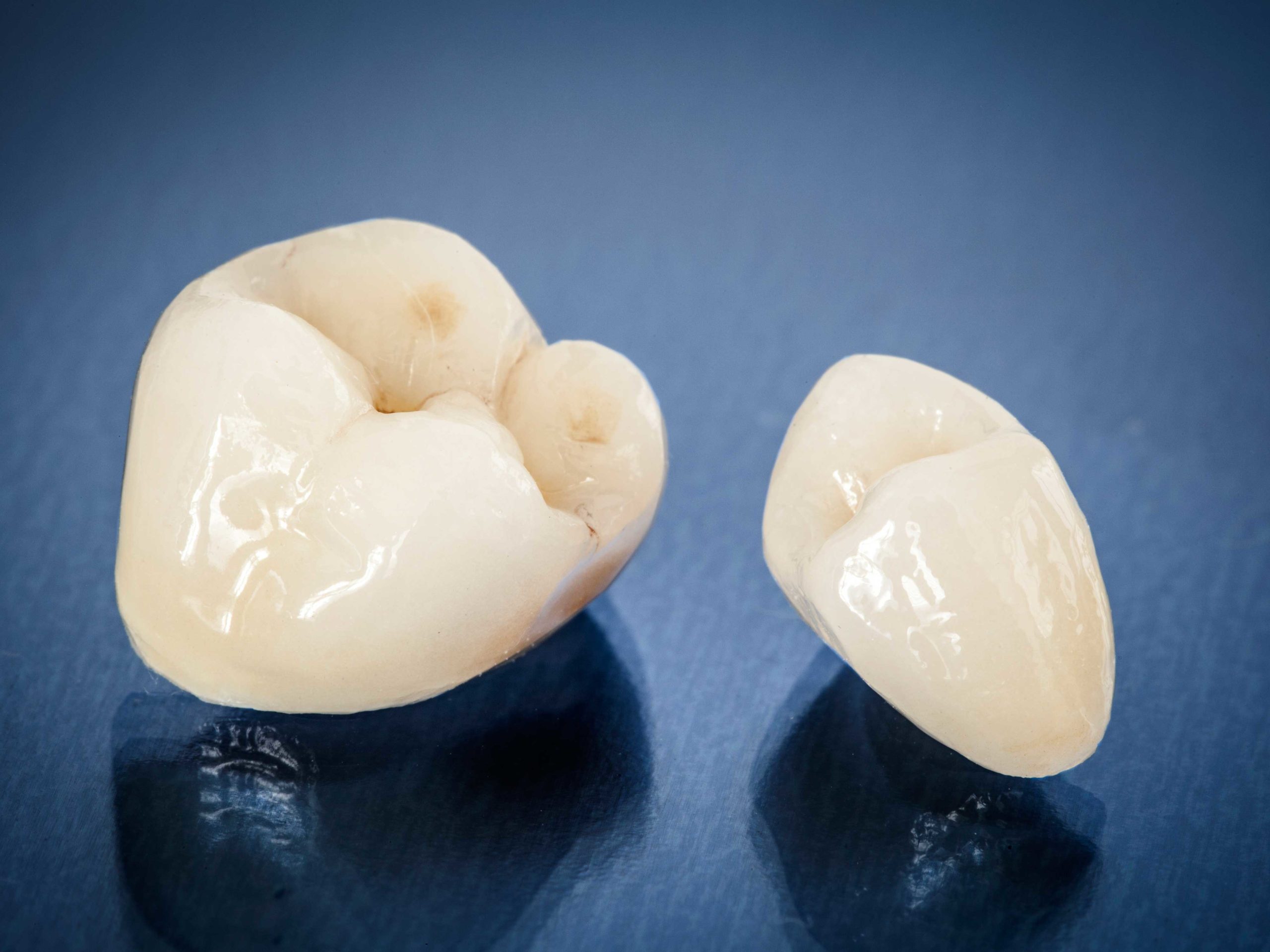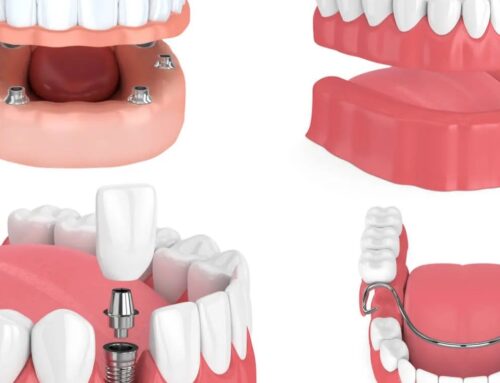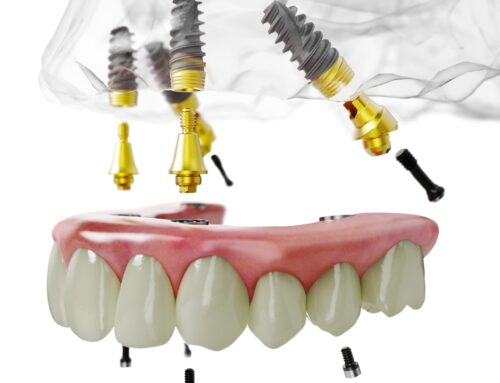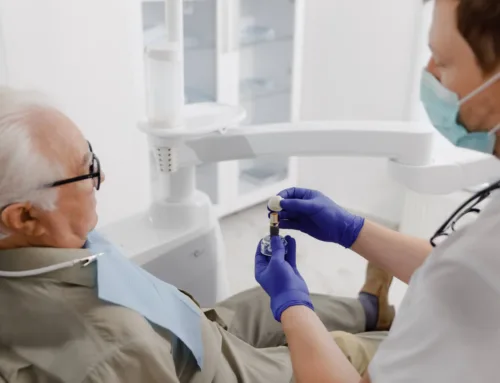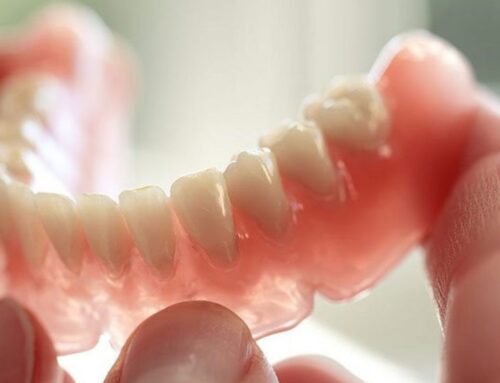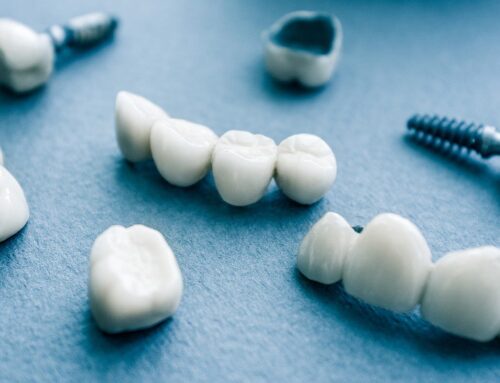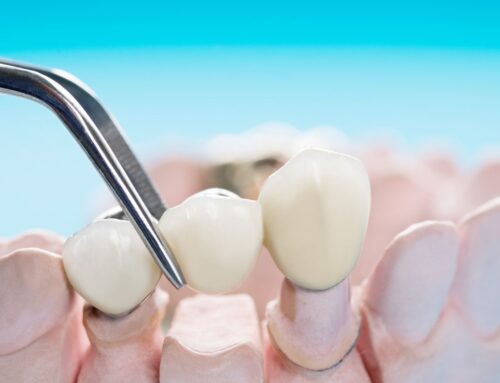Preserve Your Own Teeth with the Beauty of Dental Crowns
Since we have only one set of adult teeth that have to last us a lifetime, it is imperative that we keep as many of them intact and as healthy as possible. However, in spite of your best intentions and care, over the course of time, our teeth may sustain an injury or be affected by tooth decay. In addition, they may wear down through unconscious night-time grinding, or simply lose their colour, strength, size or shape through everyday use.
In order to preserve and / or restore your own teeth, dental crowns – the tooth-shaped caps that are cemented over your tooth – provide a viable, long-term solution. Crowns can restore or even improve the original tooth’s shape, bolster the size, improve the strength and thereby, change their overall appearance.
Citing multiple studies, an article in the Journal of the Canadian Dental Association states that there is “long term success and longevity of metal-ceramic crowns for as much as 23 years, even when they were made by undergraduate students!”
So… Are You a Crown Candidate?
There are several reasons for getting a restorative dental crown. Could yours be one of them?
Do you have:
- A weak, decayed or cracked tooth that needs to be protected from breaking apart?
- A broken tooth or one that is severely worn down?
- A large filling – with not much tooth remaining – that needs to be covered and supported?
- A dental bridge that needs to be held in place?
- Severely discoloured or misshapen teeth?
- A dental implant that needs to be covered? or
- A tooth that has been treated with a root canal?
If any of these apply to your own oral-health situation, please contact our dental experts for a personal consultation, and get ready to smile again. Your crowns will provide a permanent repair solution and be colour-matched perfectly to your natural tooth shade, so they are not noticeable.
In the meantime, according to the globally renowned Mayo Clinic, you can start avoiding / minimizing your “damaging habits”:
- “Don’t chew hard items, such as ice and hard candy, which can break your crowns — or your natural teeth.
- Avoid tooth-staining tobacco and caffeine products.
- Get treatment if you grind your teeth”.
What Type of Crowns Are Right for You?
There are many options for crowns, which include Onlays and 3/4 crowns that provide less coverage for your tooth vs traditional dental crowns, which cover the entire tooth. These may be the more ‘conservative solution’ that we use, when you still have more of a solid tooth structure and therefore require less reshaping of the tooth to hold the crown.
What Are the Underlying Structural Components?
As dentists, we are faced with a number of choices of alloys, ranging from high noble alloys with a noble metal content of 60% or higher, to noble alloys with a noble metal content not less than 25%, to base metal alloys. Some base-metal alloys contain nickel, an element with a relatively high sensitivity rate of 4.5% in the general population and considerably higher in females. Ideally, metal-ceramic crowns should be fabricated using high-noble or noble metal.
Six Most Common Types of Crowns
There are trade-offs for each type of crown material, each with their pros and cons in the attempt to balance between aesthetics and functionality.
- E-Max Crowns are all ceramic crowns, made from lithium disilicate and are the optimal choice for our patients who require the most pleasing of aesthetics for their front teeth or bicuspids, combined with superior strength vs other types of high aesthetic crown. E-max crowns are more translucent like real teeth, permit more light through and are ideal if you have metal allergies. They require less shaping of the underlying tooth and create a more lifelike crown, with no staining required. E-Max crowns don’t need to be as thick as other materials, requiring less natural tooth removal.
- Porcelain Fused to Metal Crown (PFMC) – this is one of the oldest dental crown types, aside from gold. In these we primarily use a highly translucent “feldspathic porcelain” on the outside, over a supporting metal substructure. Used for bridges and spatially-limited areas that don’t need high aesthetics but still require high strength, you may even be able to visually identify a PFMC wearer: if you see a grey line at the gum line where the margin of the crown is. Since these have been around forever, with the advent of better ceramics – like zirconia and E-Max – PFMC’s are being phased out somewhat, in favour of newer and better.
- Zirconia – the popularity of these crowns have grown, as they are the ideal solution for full-mouth restorations, have the strength and meet budgetary constraints (vs gold crowns). Used for molars and bicuspids, these are ideal solutions for limited space, as well as patients who have lost vertical dimension through multiple broken down teeth or who grind and clench their teeth.
- Gold – although in dentistry a gold crown is always a mixture of metals, these still represent the *gold* standard due to their functionality and durability. Whether it is a PFMC or a Gold crown, gold crowns are comprised of three different types of metal mixtures: High Noble, Noble and Base Metal.
- High noble crown – must be comprised of at least 60% of the following noble metals: gold, platinum, palladium and silver, with at least 40% (of that 60%) being gold.
- Noble crown – must contain at least 25% of the noble metals (gold, platinum, palladium, or silver).
- Base metal crown – has no noble metal content whatsoever. This typically contains a non hypo-allergenic nickel which some patients develop allergies to.
The higher the noble metal content, the better the crown fits and functions
- Stainless Steel Crowns (SSC) – as their name depicts, although high in strength, these stainless steel crowns are are generally pre-fabricated, are not built to provide a custom fit, score low on the aesthetics scale but provide a good alternative for out-of-sight molars. Selecting from a few pre-made sizes, you get a somewhat imperfect fit for use in temporary crowns, primary / baby teeth, or permanent teeth. The crown on a child’s permanent tooth root canal is eventually converted to one of the previously mentioned permanent crown types.
- Pressed Ceramic: longer lasting than the all-porcelain crown, in this option the conventional metal liner (like the one used in the PFMC), is replaced with pressed ceramic hard inner core, which is then capped with porcelain. This reproduces the best natural colour match, resulting in an exact replica of your individual teeth in the opaque and translucent areas. Using the CAD-CAM process, your crowns can be made all in one consultation and be metal-allergy-free, since the contact with the gums is made through a ceramic core.
Great Preparation for Your Crowns… Begets Great Results!
“By failing to prepare, you are preparing to fail.”
― Benjamin Franklin
Typically, you will have two visits to our office, to complete a dental crown.
Visit #1 – a Thorough Preparation
- The recipient host tooth for the crown is examined thoroughly, starting with comprehensive X-ray of the tooth and the bone around it. If the X-rays show any decay, or if there is a risk of infection or injury to the tooth’s pulp – the soft tissue inside your teeth that contains blood vessels, nerves and connective tissue – a root canal procedure will be performed. (More information to follow on root canals.)
- To make space for the crown itself, the tooth to be capped is filed down, across the top and sides, with the amount to be filed determined by the type of crown being installed. All-metal crowns are thinner and don’t need as much of the tooth removed vs an all-porcelain or PFM crown.
- If too much of your tooth is missing — due to damage or decay — a filling material will be used to build up the tooth structure sufficiently for the crown to cover.
- After the reshaping, an impression of the recipient tooth – plus the teeth above and below – is done to ensure that the crown will not affect your bite. These impressions are sent to our dental laboratory and the crowns are typically completed in two to three weeks.
- To conclude your first visit – and if root canal is not required – a temporary crown is made for you to protect the prepared tooth, while waiting for the permanent crown. For greater insights, the Canadian Dental Association site will provide even more detail.
Role of Root Canal Treatments in the Crown Preparation Process
Endodontic treatments become vital to save a tooth, when the pulp – the soft tissue inside the root canal – becomes inflamed or infected. This could be the result of a variety of causes: deep decay, repeated dental procedures, an injury or a crack, or chip in the tooth. If this infection of the pulp is left untreated it begins to eat away at the surrounding bone, causing pain or leading to an abscess. With this procedure, the infected tooth pulp is cleaned out and the canals of the tooth are disinfected. The only other treatment would be to extract the tooth, which in itself could lead to a whole host of other problems!
By the time the pulp is infected it must be treated and cannot heal on its own. It can even weaken your entire immune system, making it very dangerous and painful. Regular cleanings and ongoing checkups can lead to early detection and prevent the onset of problems.
Be aware of the following symptoms, that may necessitate and expedite the need for a root canal:
- Severe pain while biting or chewing
- Swollen or tender gums, sometimes with a darker colour
- A chipped or cracked tooth
- Heightened or lingering sensitivity to cold or hot foods
- Small white spots resembling pimples, on the gums
- Deep decay or darkening of the gums
- A lingering bad taste in the mouth, and
- Trauma can also cause deep damage to the nerve of a tooth.
The need for a crown after a root canal is highly correlated to the location of the tooth in the mouth.
Posterior teeth – like molars and premolars – are good candidates for crowns, since they are needed more for chewing. However, the incisors and canines – located in the anterior – are not vital for chewing, and don’t always require crowns.
If left untreated, the infection in the tooth can spread to other parts of the body, and in some cases can even be life threatening. If you are in need of a root canal, the infected pulp in the tooth needs to be removed as soon as possible.
Most root canals can be done in one to two appointments. The first appointment is the procedure itself when the infected pulp is removed. The second (and maybe third) appointment is when the root canal gets cleaned and filled with a crown or other filling to prevent infections. Each appointment lasts roughly 90 minutes each
Waiting too long to get a root canal can oftentimes result in tooth loss. This generally occurs when the root of an infected tooth has gone untreated for so long that results in bone loss. Many times with severe furcation, it might be too late for a root canal resulting in the extraction of the tooth.
Visit #2 – Installation of the Crown
- After the removal of the temporary crown, the fit and colour of the permanent crown is examined.
- On approval, the new crown is permanently cemented in place, typically under a local anesthetic.
- Ongoing follow-ups will ensure that the installation and the recovery is on target.
Living With a Crown – the Potential Challenges and Long-term Joy
Although some of the previously uncomfortable sensations have been resolved, you may also experience some problems with your new crown, which include the following:
Sensitivity or Discomfort: A newly crowned tooth may be sensitive immediately after the procedure, as the anesthesia wears off. If there is still an intact nerve, you may have heat and cold sensitivity, which may be alleviated by using a toothpaste designed for sensitive teeth. If pain or sensitivity occurs when you bite down, it typically means that the crown is sitting too high on the tooth, a problem which can easily be resolved with a phone call and a follow-up visit.
Chipped Crown: In spite of your best efforts to take care of it, all porcelain crowns can sometimes chip. Small chips can be repaired, and the crown can remain in your mouth. If the chip is large or there are numerous smaller ones, the dental crown may need to be replaced.
Loose Crown: The cement that holds the crown on the tooth may wash out from under the crown itself sometimes. This results not only in a loose crown, but it allows bacteria to leak in and cause decay to the tooth that remains. If your crown feels loose, contact us as soon as possible.
Dislodged Crown: A dental crown can actually fall off, due to an improper fit or a lack of sufficient cement. This constitutes an emergency, therefore contact us immediately! Our team of specialists are ready to assist you. We will provide you with specific instructions on how to care for your tooth and crown until we can see you, and re-cement your crown back in place. If this is not possible for some reason, a new crown will need to be made.
Allergic Reaction: The actual metals used to make dental crowns are often a mixture of several metals. Although extremely rare, you can have an allergic reaction to the metal or porcelain that’s used in the dental crown.
Dark Line Adjacent to the Gum Line: Don’t panic, the dark line is normal, especially if you have a porcelain-fused-to-metal crown. This dark line is simply the internal metal core of the crown that is showing through.
On reflection and in summary, these few problems are relatively minor in light of the potential decades of use and longevity that your new permanent crowns will provide.
In Conclusion
we trust that you have found these insights valuable to provide you with a preliminary guide, on your decisions for crowns.
Contact our team of specialists for a free consultation about which permanent crown is right for you.
Restore your smiles. Regain your confidence. Revitalize your lifestyle!
Appointment Request
If you’re interested in any of our procedures, and would like to meet with one of our dentists to discuss options, costs and get additional information, complete this short form and we’ll give you a call to arrange for a no-obligation appointment at our Barrie clinic.
